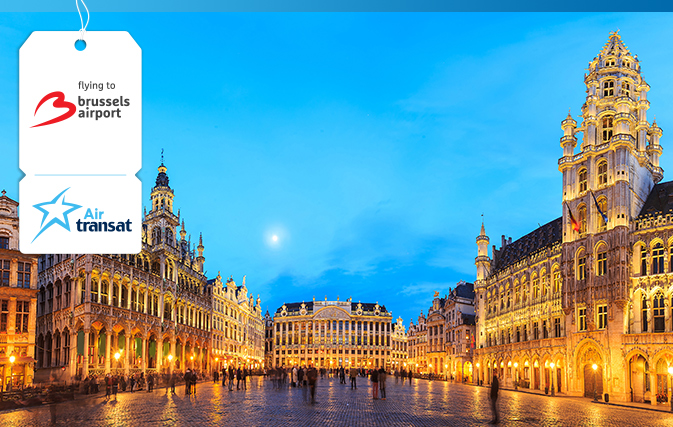Brussels
The first sign that there’s a lot of quirky to unpack in Brussels is the bronze statuette of a urinating boy, Manneken-Pis. You can then follow the offbeat trail throughout the Belgian capital, as iconic comic-book characters painted on city walls beckon you into their alternate universe—look out for the Dalton brothers, Lucky Luke! And cap off your day with a visit to the Royal Palace, which boasts a unique room decorated with 1.4 million jewel beetles.
Comic-strip route
Brussels is in love with comic strips—so much so that they have invaded its walls. Head to rue de l’Étuve, and you’ll stumble into an adventure with Tintin, his white fox terrier, Snowy, and his whisky-sipping buddy, Captain Haddock. Take a stroll with Spirou
through the Place du Jeu de Balle, Brussels’ leading flea market in the Marolles district. Or steer clear of the dim-witted Dalton brothers on rue de la Buanderie as they try
to flee the scene of a bank robbery—wait, did Averell Dalton just steal a ham? Relive all your childhood classics on this comic-strip route.
Manneken-Pis
Tintin isn’t the only famous character on rue de l’Étuve. Amble down the street to see Manneken-Pis, which perfectly embodies Brussels’ quirky and irreverent spirit.
Perhaps you don’t find a bronze statuette of a urinating boy all that unusual? Well,
what if we told you this little fellow boasts a wardrobe of some 800 costumes, the
oldest of which was given to him by the Elector of Bavaria in 1698? And that he has
a female counterpart, Jeanneke Pis, a limestone statuette of a urinating girl in pigtails on the east side of the Fidelity Alley? Yes, now that’s quirky.
Grand-Place
Take a stroll through the UNESCO World Heritage site of the Grand-Place, Brussels’ central square. You’ll travel through the capital’s history at the Brussels City Museum, housed in the neo-Gothic building Maison du Roi (look for the original statue of
Manneken-Pis here!). Competing for attention is the slightly asymmetrical City Hall at
the opposite end. This 15th-century Gothic masterpiece with an intricate 96-metre-tall tower was the target of French bombardment in 1695—ironically, it was the only building that survived it.
Atomium
Looming in the Brussels skyline, the Atomium consists of nine spheres that represent
an iron crystal magnified 165 billion times. Built as a nod to the power of science
for the 1958 Brussels World’s Fair (Expo 58), this giant fugitive from your high-school chemistry class is now one of the most popular tourist attractions in Brussels. Don’t split without dining at the restaurant 95 metres high and soaking up the panoramic view of the city.
Royal Palace
Every summer, the 19th-century Royal Palace opens its imposing doors to visitors with a penchant for all things majestic. You’ll explore the Throne Room, with its oak parquet
and inordinate number of gilded and bronze chandeliers; the Goya Room, with tapestries based on a drawing by famed Spanish artist Francisco de Goya; and the Mirror Room, whose ceiling and one of three chandeliers are clad in nearly a million and a half jewel beetles. Yes, beetles.

